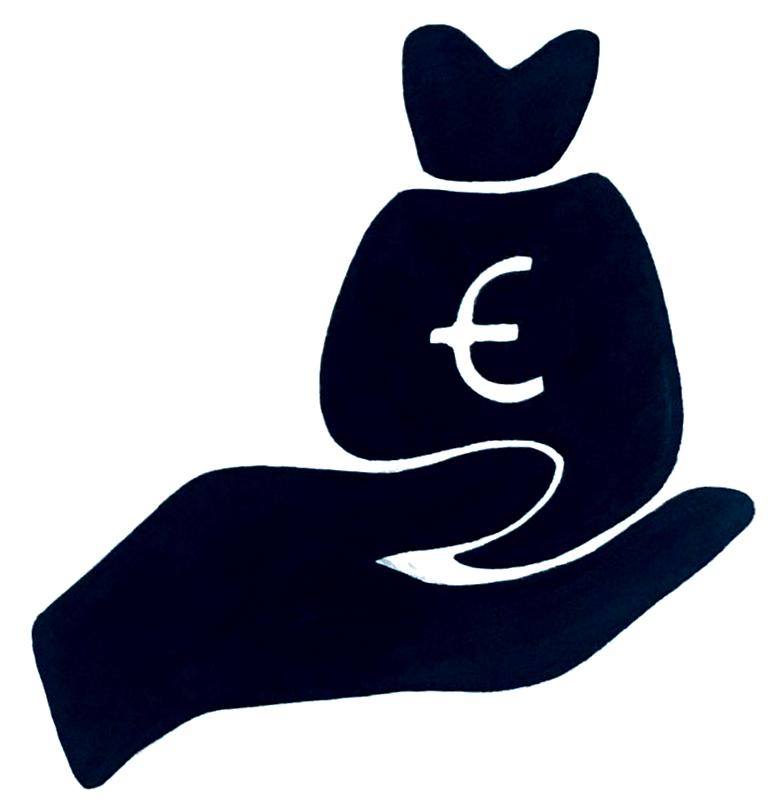Happy policy:
‘THE BIG 3’ measures of happiness

Let’s play
Let’s start with a thought experiment:
Imagine for a second – if you will – you were a policy maker wanting to measure happiness for the purpose of designing and implementing a new policy. Broadly speaking, you’d face 3 options to choose from:
I call them ‘THE BIG 3’.
★Careful though, don’t take this mind game too lightly: Consider that, whichever option (or happiness measure) you choose, impacts the results and evidence you’ll eventually get – and therefore the choice of subsequent policy.
So, don’t just gamble with it!
‘THE BIG 3’ (Accounts of Wellbeing)
1) NEEDING
⟿ formally the Objective List Account

The NEEDING measure of happiness seeks to define and measure welfare objectively.
It sets out universal criteria/indicators that need to be fulfilled in order to be happy. Universal criteria include basic human needs and rights (to food, shelter, health, security, freedom …) which are seen as pre-requisites to individual wellbeing.
What about the pros and cons here?
The Pros: It forces policy makers to focus on primary needs first, which might assist and benefit the weakest and poorest members of society.
The Cons: Is there such thing as an objective definition of welfare? What should be on the list and what not? And how to rank/weight needs adequately?
🧠 To sum up: With the NEEDING measure of happiness there’s always a risk of being overly paternalistic in telling people what their needs ought to be and which needs need to be satisfied first in order to be happy.
2) WANTING
⟿ formally the Preference Account:

The WANTING measure of happiness posits that ceteris paribus (all other things being equal) life is better the more preferences are satisfied or desires are fulfilled.
Income is used as a proxy here to measure preference satisfaction, as the more income you have, the more (material) preferences you can – at least in theory – satisfy.
But again, what about the pros and cons of this measure?
The Pros: People’s income and income distribution are easily statistically determinable. Therefore it is an easy and cheap measure of happiness for policy makers.
The Cons:
► First, it doesn’t take into account preference mistakes: sometimes our preferences are mistaken because of lack of information ( – again, we are not perfect ‘homo oeconomicus’ and our rationality is bounded). We also sometimes make mistakes in how we feel or make choices that are not in our best interest.
► Second, it doesn’t care about preference reversals. Preference reversals happen when options are presented in a different order. When options are framed differently, we tend to have different preferences.
► Third, antisocial preferences are practically accepted: it is accepted that your own income is maximised and your own ability to satisfy your preferences is realised at the expense of someone else in society (whose situation might deteriorate as collateral effect).
► Fourth, it views happiness merely in a ‘hyper-materialistic’ perspective, since it captures only those preferences and desires that can be satisfied with money.
🧠 To sum up: The WANTING measure is simple and easy to quantify but relevant assumptions about our preferences are mistaken.
3) ENJOYING
⟿ formally the Mental Account or Subjective Wellbeing (SWB) Account:

The ENJOYING measure of happiness enquires into how people subjectively feel.
It is commonly appraised by surveys with self-report questions of 2 different types: evaluative questions ask about our overall life satisfaction while experience-based questions ask about our temporal, i.e. recent or current moods and emotions.
Let’s take a final look at the pros and cons here:
The Pros: It puts the individual at the centre of inquiry. It also provides the most realistic and authentic definition of happiness as it comes closest to people’s actual subjective feelings and mental states of happiness and wellbeing.
The Cons: The main cons here relate to issues that come with self-reported data; but also, issues that relate to the subjectivity of happiness. As a matter of fact, some suprisingly paradoxical effects interfere with and mould our own view of our happiness:
► When reporting about their subjective wellbeing (SWB) in surveys, people might play down the importance of life domains in which their satisfaction is low and focus on domains in which it is high. This is because, when we answer self-reporting questions, we like to be viewed favourably by others. This effect is produced by ‘the social desirability bias’.
► People tend to get habituated / to adapt to changes in living conditions or income. Despite major positive or negative life events or life changes, people tend to quickly return to a relatively stable level of happiness. This means that even if their objective wellbeing improved, this is not necessarily reflected by an increase in subjective wellbeing.
☇ Btw, this phenomenon is called ‘the hedonic treadmill effect’. The term was coined by British psychologist Michael Eysenck, who compared the pursuit of happiness to a person on a treadmill, who has to keep moving just to stay in the same place.

► An increase in a country’s wealth does not go hand in hand with an increase in the happiness of the people who live in that country. (☈ Again, this is an example of ‘objective vs. subjective wellbeing‘ discrepancy).
This finding – discovered by Prof Richard Easterlin – was labeled ‘Easterlin paradox’.
‘‘ Simply stated, the happiness-income paradox is this:
At a point in time both among and within countries, happiness and income are positively correlated. But, over time, happiness does not increase when a country’s income increases.’’
Richard Easterlin (1974)
► As the level of actual income increases, people’s definition of what they consider a “satisfactory” or “sufficient” level of income also changes (i.e. increases).
☇ Famous psychologist Daniel Kahneman called this ‘the satisfaction treadmill’ because past improvements lead to new expectations of future improvements. Comparisons with future hypothetical states lead to less satisfaction with present states.
In other words: we always want more to achieve the same level of satisfaction.
‘‘ A want that is satisfied is no longer a want. The organism is dominated and its behaviour organised only by unsatisfied needs.’’
Maslow (1954/1979) cited by Dolan & White (2007)
🧠 To sum up: The ENJOYING measure of happiness deserves credit for being the sole measure that actually tries to talk to us, to ask us questions about how we feel about our life and happiness. Nevertheless, it is the most complex of all BIG 3 measures. And, the analysis of results bears some fundamental risks and caveats.
Time to choose
You may have sensed by now that ‘Happy policy’ is a tricky game to play, not least because there’s not just one clear cut way to win it. Whichever move you make bears its own risks. So it is really a question of weighing it all up against each other.
And, in the end it is perhaps also more fundamentally a question of ideology and ambition:
How close do y o u want to come to grasping what really makes people happy and how y o u should go about positively changing their lives with rightful policies?
Stay in the game ! 🐿
Written and published July 2019
by Jessica
List of references I used in this article:
Dolan, P. and White, M. P. (2007), ‘How can measures of subjective well-being be used to inform public policy?’, Perspectives on Psychological Science, 2: 71–85.
Dolan, P., & Kahneman, Daniel. (2015). Happiness by design: Finding pleasure and purpose in everyday life.
Dolan, P., Peasgood, T. and White, M.P. (2008) ‘Do we really know what makes us happy? A review of the economic literature on the factors associated with subjective wellbeing’, Journal of Economic Psychology, 29 (1): 94–122.
Easterlin, Richard (1974) “Does Economic Growth Improve the Human Lot? Some Empirical Evidence”. In Nations and Households in Economic Growth: Essays in Honor of Moses Abramovitz, edited by Paul A. David and Melvin W. Reder, 89-125. New York: Academic Press.
Kahneman, D. (2000). Experienced utility and objective happiness: A moment based approach. In D. Kahneman & A. Tversky (Eds.), Choices, values and frames (pp. 673–692). Cambridge, England: Cambridge University Press.
Kahneman, D., Ritov, I., & Schkade, D. (1999). Economic preferences or attitude expressions? An analysis of dollar responses to public issues. Journal of Risk and Uncertainty, 19, 203–235.
Maslow, A.H. (1970). Motivation and personality. London: Harper & Row. (Original work published 1954)
Odermatt, Reto and Stutzer, Alois. (2017) Subjective Well-Being and Public Policy. IZA Discussion Paper No. 11102.
Tomlinson, Michael W. (2013). Is everybody happy? The politics and measurement of national wellbeing. Policy & Politics, 41(2), 139-157.
Subscribe to My Newsletter !